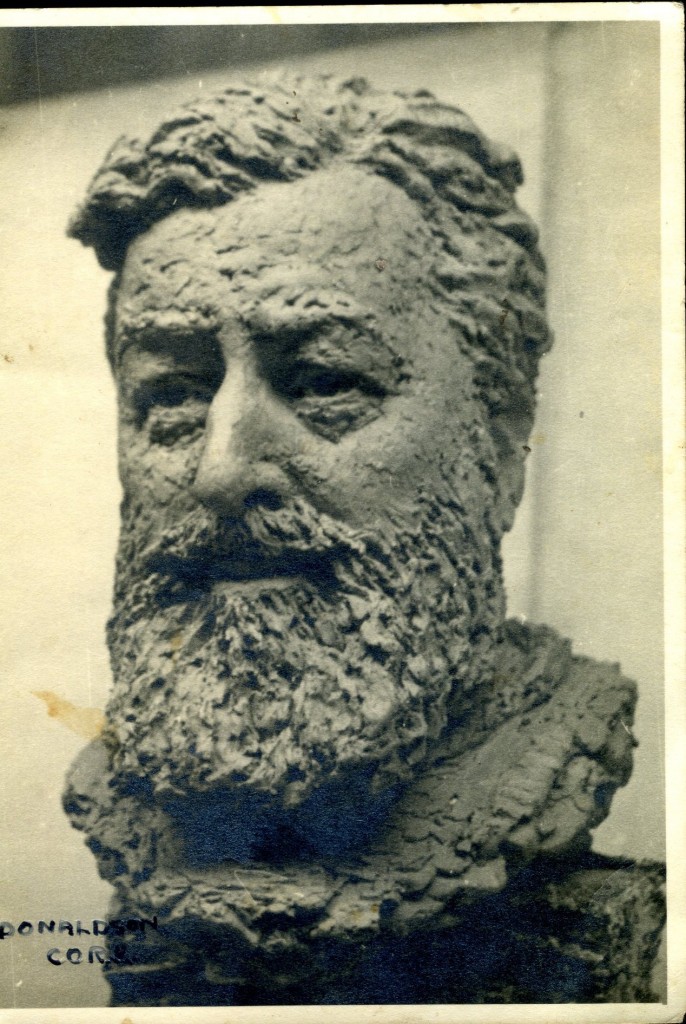
Kieran’s Our City, Our Town article, Cork Independent
In the Footsteps of St. Finbarre (Part 217)
A Labour of Love
Within the altar area of St. Peter’s Church, Carrigrohane lies a handsome marble dado which was erected in 1901, as a memorial to Rev. Robert Samuel Gregg who later became Primate Gregg. The dado is in panels of Cork, Carrara and Connemara marbles – red-white and green with artistically carved pattern. The chancel was also paved with mosaic.
On the right hand side of the altar, a memorial remembers Rev Edward Gibbings, Canon of Cork Cathedral in 1916 and Rector of Carrigrohane Parish, 1902-1924. The memorial evocatively invites one to reflect on the power of heritage in terms of faith and hope. The memorial notes: “Remembering without ceasing your work of faith, labour of love and patience of hope in our Lord Jesus Christ”. The elaborative carved eagle is in memory of Edward’s wife Caroline (nee Day) who died on 7 May 1907. She was the eldest daughter of Robert and Rebecca Day of Cork. Robert Day was an antiquarian, fellow of the Society of Antiquaries and a founder and president of the Cork Historical and Archaeological Society.
A son of Edward and Caroline was Robert Gibbings (1889- 1958). He became an Irish artist and author who was most noted for his work as a wood carver and engraver and for his books on travel and natural history. Martin J Andrews in 2003 compiled an elaborate autobiography of the man, entitled The Life and Work of Robert Gibbings from which I attained the following information. In addition, Cork’s Crawford Municipal Art Gallery recently presented an insighful exhibition of some of his work.
Robert grew up in the town of Kinsale where his father was the rector of St. Multose church and he developed a love of the wonders of nature and wildlife on the beautiful banks of the Bandon River. His love for boats and the sea was gained at an early age. He was greatly influenced by his maternal grandfather, Robert Day who was a passionate collector. His home, Myrtle Hill House, was a treasury of art and rare, interesting objects.
From early childhood Robert wished to pursue art as a career. This however was not in keeping with his parents’ wishes and it was decided that he should become a doctor. He began his medical studies in Cork University in 1907, the year his mother died. He studied medicine for three years at University College Cork before deciding to persuade his father to allow him to take up art. He studied under the painter Harry Scully in Cork and later at the Slade School of Art and the Central School of Art. Both the latter being premier art and design institutions in the UK.
During the First World War Robert served in the Royal Munster Fusiliers and was wounded at Gallipoli in the Dardanelles. He was invalided out and resumed his studies in London. In 1919 he married Moira Pennefather, daughter of Lieutenant Colonel Edward Graham Pennefather from Tipperary. He had four children withMoira. During this time, Robert’s illustrations began to appear in books. He provided the illustrations The Canterbury Tales and The Four Gospels and an edition of Pierre de Bourdeille’s Vies des Dames galantes (The Lives of the Gallant Ladies), tales printed by the Golden Cockerel Press. This small company was based in the countryside at Waltham St Lawrence in Berkshire.
Robert eventually bought control of the Golden Cockerel Press, and proceeded to publish a range of limited edition books, illustrated by himself and fellow members of the Society of Wood Engravers. Robert remained the proprietor of the Golden Cockerel Press from 1924 until 1933, when he sold it to a fellow native of Cork, Christopher Sandford.
However, financial pressures and associated pressures eventually led to a break-up with Robert and his wife. In time Robert married a second time. She was Elisabeth Empson, whom he married in 1937 and with whom he was to have three children. His work Blue Angels and Whales, was published by Penguin Books in 1938 and gave his talent for writing and illustrating much greater exposure. With the advent of World War II, Elizabeth and the children emigrated to Canada for safety reasons, while Robert taught book design and production at the University of Reading. In 1939 he built himself a punt, the Willow, and floated down the Thames. His observations on the countryside, the river and its natural history, were the fruits of months spent on the Thames, accompanied by sketch pad and microscope. Written at the time of the Battle of Britain, the book captivated readers, aware that the world it portrayed was under threat of being wiped out. It’s very positive reception led to further work on rivers, Coming down the Wye, Lovely is the Lee and Coming down the Seine.
The bearded figure of Robert Gibbings also became a familiar sight on British television, as was his voice to radio listeners, and massive sales of his books. It is said that David Attenborough remembers Robert as being one of the inspiring influences at the start of his career. Robert died at Long Wittenham on the banks of the Thames in January 1958.
To be continued…
Captions:
545a. Robert Gibbings, c.1950 Gougane Barra (pictures: Cronin family collection, Gougane Barra)
545b. Sculptured piece representing Robert Gibbings by Marshall C. Hutson, c.1944
